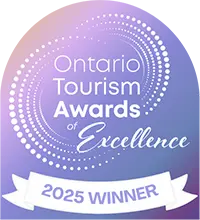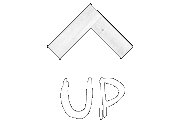Amphibian Ponds
A great way to create habitat for amphibians in your area and increase the visual appeal of your property is to build a pond! Read on for tips on designing and maintaining your pond.

Step 1: Choose a location
When building your pond, remember to consider lot lines, locations of any overhead or underground lines, and local bylaws requiring fencing or permits.
Here are some more factors to keep in mind when deciding on a site for your pond:
- Build your pond on low ground where it can naturally collect rain and meltwater.
- Avoid areas near roadways to prevent road mortality as amphibians migrate to and from the pond.
- Your pond should be located away from runoff areas. Planting a ‘buffer’ strip of vegetation around the pond can help filter out contaminants before they enter the water.
- Building close to existing amphibian populations will make it more likely that animals will discover and use your pond.
Step 2: Dig a hole!
In general, amphibian ponds should be at least 4 metres long and 2 metres wide and at least 1.5 metres deep. Digging below the frost line ensures that amphibians that spend the winter underwater will not be affected by ice formation. Larger ponds will also have smaller temperature fluctuations and keep predators such as crows, snakes, and raccoons away from the centre.
Add a shallow shoreline or ‘shelf’ (10-18cm deep) to provide areas for plant growth and egg laying.
Step 3: Add an impervious layer
If the soil in your area does not contain clay, you will need a liner to ensure the ground can hold water. We recommend contacting your local landscaping company or greenhouse for the latest advice on liners and pond construction.
Flexible liners such as Ethylene Propylene Diene Monomer (EPDM) are long-lasting and non-toxic to aquatic life. To determine the size of your liner, measure the length and width of the rectangle that your pond will fit in. Add twice the maximum depth of your pond and a metre to each of these measurements.
Place the liner over the hole you have dug and hold it down firmly with a line of bricks or paving stones.
Step 4: Create an overflow area
To prevent flooding, an overflow area can be created beyond the edge of your pond. This can be a hole dug down to a free-draining layer which you should break up, backfill with clean stones, bricks and then cover with a filter (such as old carpet or fibre matting) and topsoil.
Step 5: Add water
If your pond is near a building, downspout runoff from the roof can be used as a water source. This also reduces household runoff entering local streams!
If you are filling your pond with tap water, you should let it stand for a week before transferring plants and animals. This allows chlorine, which is commonly found in urban water supplies and can kill amphibian larvae, to dissipate from the water.
Note: if using tap water, ensure your municipality does not use chloramine in its water supply, as this will not dissipate from water.
Step 6: Maintenance
Over time, a well-managed pond will reach its own internal balance and require minimal maintenance. Remove excess organic matter such as fallen leaves to prevent the water in your pond from becoming foul and developing algal blooms. Excess algae can also be removed manually. Do not use herbicides as they can harm aquatic organisms.

What species will I find in my pond?
The species in your pond will depend on the size, depth, and location of your pond. Toads are often the first species to appear as they are well-adapted to living near homes. To attract toads to your pond for breeding, ensure your pond receives full sunlight and provide cover objects such as boards or flat rocks to shelter toadlets while they move away from their birth pond.
Ponds near wooded areas can attract spotted salamanders, spring peepers, and wood frogs. These ponds remain cool in the spring due to abundant tree cover while their proximity to forests allows animals to find abundant food in the summer.
Ponds on farmland and similar areas penetrate the water table and retain water all summer, attracting species like green frogs that require permanent ponds for tadpole development.
Where can I find more information?
Please contact us at [email protected] for more information on building a pond.













